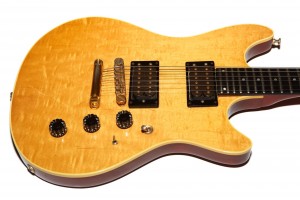
The Guild S-275 is a bit different than most of the Guilds I own while also being a typical Guild. It’s a very interesting guitar in that it seems to be designed to appeal to both Strat and Les Paul buyers in the hopes of being the best of both worlds. Does it measure up? Let’s see how it fares as I put it through my normal evaluation routine.
Introduction
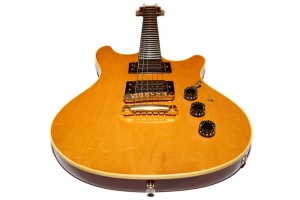
Remember, this guitar is from 1982 which was a time where people were getting tired of what we now call classic rock and players like Eddie Van Halen were now center stage. Mötley Crüe was in its infancy, Poison hadn’t yet get come together, and Ratt was recording their first commercial album. Iron Maiden’s Number of the Beast was charting, as was Van Halen’s Diver Down, and Judas Priest was owning the airwaves on one channel while Michel Jackson’s Thriller nailed the #1 spot on another. Also, Duran Duran was a thing. I can’t forget Duran Duran, though I’m sure the Iron Maiden fans at the time would have liked to.
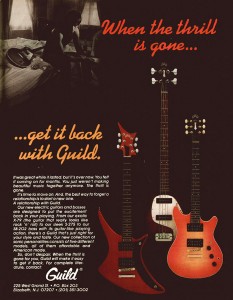
The problem is, I believe, that this guitar tried to fill a niche that didn’t really exist. I was playing in my prime during the ’80s and loved all music, but the hair band scene was becoming the decade’s defining music for many of us and the S-275 didn’t quite scratch that itch. I bet it would have if it had sported a Floyd Rose floating tremolo system on it, but I imagine Guid would have mucked that up by putting on a Kahler instead.

It was a hell of a time to be a alive.
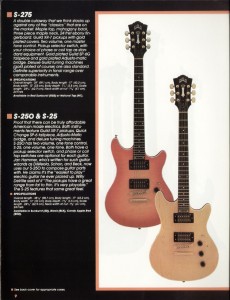
In an effort to describe this guitar on the Let’s Talk Guild website, I wrote a quick list of reasons why the Guild S-275 guitar isn’t quite like a Les Paul or Strat while simultaneously being like both. I’ve included and expanded that list here:
- It’s like a Les Paul with its mahogany back and maple top
- It’s like a Strat because it’s a flat-top
- It’s like a Les Paul because it’s short scale
- It’s like a Strat in that it has only three knobs (vol/vol/tone)
- It’s like a Les Paul because it has a set neck
- It’s like a Strat because all the controls are clumped together
- It’s like a Les Paul AND a Super Strat because it has two humbuckers
- It’s like a Guild because it’s got an ebony board, XR-7s, and gold hardware that’s worn to the bone.
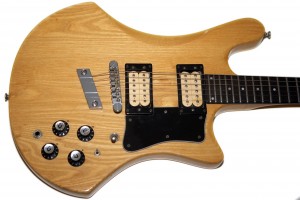
The Guild S-300 was a pretty oddly shaped model that I think turned a lot of people off from an otherwise stellar guitar. Sure, they’ve got a kind of ’70s bell-bottom vibe going on, but those guitars were monster players. If only Jimmy Page had played an S300 then I could have retired from the resale value of that sexy-looking bit of Guild guitar goodness instead of being thrilled that it just held its value for 30 years. I also think that if Guild had designed the S-300 to look more like the S-275 back in the late ’70s that it probably would have had more of a pop-culture impact instead of being an obscure footnote known only to hardcore Guild fans.
Finish
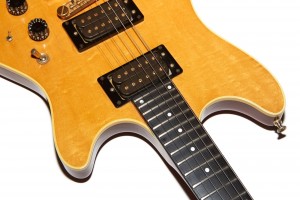
The guitar is typical Guild high-end quality which is quickly evident when you pick it up and there are no finish flaws anywhere on the guitar. There is a fair bit of wear on the back from being played for years, but no deep gouges into the wood.
The S-275 was offered in this Natural Top (NT) finish as well as a Red Sunburst (RSB) finish. The back is finished in a transparent red which is similar to the finish seen on the back cherry sunburst Les Pauls.
Fretboard and Neck
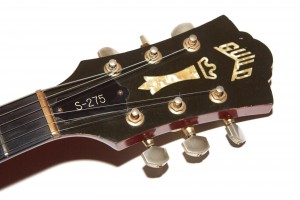
The fretboard material is ebony and is not bound which is another reason why this guitar reminds me of the S-300 since that model had a similar neck design. I find it a little strange to have a guitar that has the top bound without also having a bound neck, but it plays great and that’s what’s important.
The fret markers are simple dots and the nut width is 1 5/8″ which seems pretty typical for the late ’70s and early ’80s Guild electrics. The neck is thinner on this guitar than I would normally prefer, but not uncomfortably so. I’ve played Ibanez RG guitars with necks so thin they make my hands ache and this guitar is nothing like that. It’s still better than some of the mid-’70s Starfires I’ve owned that had necks so tiny I couldn’t stand them. Again, it reminds me almost perfectly of the S-300A-D’s neck.
The fretboard radius measures at a pretty curvaceous 9.5″ which makes it fairly Strat-like, though the 24 3/4″ scale length puts it right back into Les Paul territory. The frets measure in the medium jumbo territory of “low and wide” (.03″ high by .1″ wide). The neck is one-piece mahogany which a departure from most of the Guilds I own that have at least three-piece necks. I believe as a result of the one-piece neck this is one of the only Guild electrics I’ve owned that seems slightly susceptible to humidity where the neck needed a slight tweak of the truss-rod to straighten it up after it’s journey to me.
Build Quality
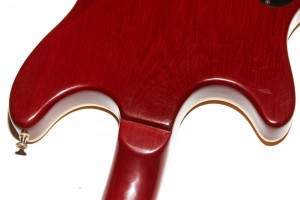
There is not a lot of flair to this guitar aside from the body binding and gold hardware. As expected, all the gold hardware is significantly worn which is not surprising given this guitars life of roughly 35 years. There is some character to the top but not in the form of eye-catching flame. It’s more of an almost flamed, sort of birdseye, not quite quilted look. It’s actually a great looking guitar but it doesn’t have a typically eye-catching top like the ones the Les Paul guys drool over.
Pickups
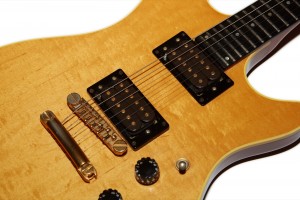
The pole screws on the pickups (there are no slugs on these) are all gold plated which is a feature I didn’t even notice until I examined them closely. It’s actually a nice touch, especially since the gold matches well with the top’s finish.
The pickups sound OK but I think they’re a limiting factor in this guitar. If I keep it I may swap them out to either something like Seymour Duncan Antiquities or vintage Guild HB1s since the guitar is routed for them, though I will admit to really liking the timbre of the guitar when played through a high-gain setup. That shouldn’t be too surprising because I think that’s kind of the market Guild was chasing with this guitar. Hell, I may even use this guitar as a test-bed for my pickup swap experiments, though the inclusion of the phase switch makes that problematic for 2-wire pickups.
Electronics
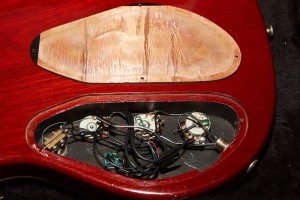
I am not a fan of this knob layout as I would greatly prefer a master volume but I can appreciate the ability to tweak the interaction of the pickups when in the middle position. My problem with the layout is that I reach for the knob which is by the bridge when doing volume swells and such, and when I’m playing the neck pickup that doesn’t do anything on this guitar.
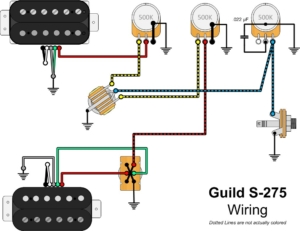
The electronics cavity is shielded with special paint and the control cavity cover is shielded with copper tape. The pots are stamped GUILD and appear to be all original. They all work perfectly without a scratch or pop to be found.
Hardware
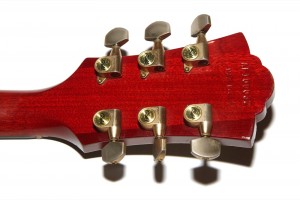

The bridge has a missing spring and a replacement screw, but that’s just typical wear and tear from the many years this guitar has been in use. This brings up a fair point about these Mueller bridges, which is that parts for them can be hard to find. If the little fiddly bits (technical term, that) go bad, break, or go missing, you’ll might have a hard time finding replacement parts.
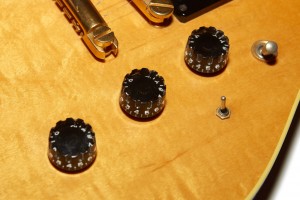
Sound
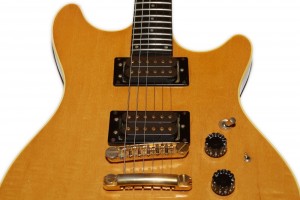
I put the guitar though my usual progressions and riffs to see how it did and it seemed to do alright, but it never really lit my fire. I can’t say that there’s anything technically wrong with it; it just never wowed me.
I put the guitar through my usual rig which is the Axe-FX Ultra into the QSC K12 speaker using the Tiny Tweed, JCM 800, and Backline settings. While the recorded tones seem to sound OK they sound of the guitar in the room was somehow lacking to the point that even my daughter noticed it. It just wasn’t as lively as the many other guitars I’ve played.
Tweed 7th Chords
Tweed Open Chords
J800 A Barre Chords
BL D-Shaped Chords
As much as I like playing this guitar, the sound is not what I’d call inspiring and I’m not entirely sure why. It’s good for hard rock, metal, and yes even the hair band stuff, but the overall impression of the tone is… meh. This was reinforced for me when my daughter had an impromptu jam session at our house with her friends and I let her use this guitar and it just sort of sounded flat. Not in the pitch a half step below the natural note kind of way, but rather in the boring and lifeless kind of way that makes you put the guitar back on the rack and grab a different one.
The uninspiring tone is disappointing because the guitar is a lot of fun otherwise and it looks absolutely great. I think a pickup swap would do the trick here and I think many people over the years have agreed which is why I often see XR-7 equipped Guilds sporting upgraded pickups on the used market.
To see if the problem was the Axe-FX (which has never disappointed me previously) I plugged the guitar into my Marshal Class 5 and let her rip. Again, it didn’t sound bad, but it didn’t make anyone go, “whoa!”, either. To further test the issue I swapped out the guitar for my 1997 Guild Bluesbird and everyone in the room noticed the difference right away. Grumbling to myself I decided to do some more tests.
One of the guilty pleasures of playing with high gain is the incredible sustain you get, but on this guitar I wasn’t feeling it. The lack of sustain on the guitar surprised me because every Guild electric I’ve ever owned has exhibited monster sustain. I set out to find the source of the problem and in doing so unplugged the guitar, put the body against my ear and plucked the strings. Sustain for days. In fact, playing unplugged, the guitar had all the resonance and sustain that I look for in an electric guitar and yes, I’m one of those guys that insist his electric guitars be loud and resonant acoustically. The guitar was fine on open chords; the problem seemed to only exist when fretting notes.
Tweed 7th Chords
Tweed Open Chords
J800 A Barre Chords
BL D-Shaped Chords
Why this guitar had a lack of sustain while plugged was was not obvious to me. Typical culprits generally include overly powerful or maladjusted pickups where excessive magnetism causes string oscillation to be dampened, so I lowered both pickups a full turn on the adjustment screws and rerecorded all of the samples. A full turn is a pretty significant change and I was rewarded with a measure of increased sustain. Hooray! Unfortunately, while I think the tone in the room improved, I was very surprised to discover that I kind of preferred the recorded tones with the pickups closer to the strings, especially on the high-gain settings. I recorded the difference with the second set of recordings with the pickups farther from the strings.
Finally, I decided to lower the tailpiece so that it was flush with the body. All my stop tailpiece guitars are like that and I think I just remembered why because as soon as I decked the tailpiece the guitar livened up and now it sustains the way I expected it to. I then put the pickups back closer to the strings, though I’m still pretty certain that I’ll end up replacing them.
Playability
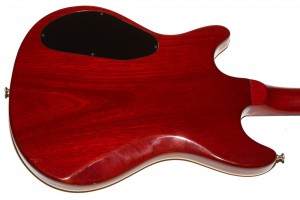
The shape of the guitar has a lot to do with how comfortable the guitar is to play and as stated previously, it’s very Strat-like in that regard. I’m not a huge fan of Statocasters mostly because I don’t like the way the huge plastic pick guards feel while I’m playing. I love the tones they produce, though, and as a child (well, 20-something) of the ’80s, I do like a nice super-Strat. Since this guitar has a solid wood top with no pick guard, I find it much more pleasing to play than a traditional Strat. I do think it would really do well with a coil-split option, though.
One of the things I did notice was that the neck volume knob and the pickup selector switch were too close to the bridge pickup for my tastes. It’s pretty popular to have a master volume near the bridge pickup on a super-Strat in order to make it easier to do volume swells, but I tend to be a pretty dynamic player and I end up hitting any controls that are too near the strings which is what happened a couple of times while playing the S-275. It’s not a deal-breaker by any stretch, but it’s worth mentioning, especially because that knob is not a master volume.
Conclusion
I think this is a very cool guitar that suffers from the inclusion of Guild’s XR7 pickups. I think it would sound amazing with Guild’s own HB1s, and I may try to go that route in the future. I’ll be sure to update this post if and when I do.
Even if I don’t go with Guild pickups, I think maybe some Seymour Duncan Antiquities or Dimarzio PAFs would do the trick. Hell, maybe I’ll hit up <a href=”https://www.jimwagnerpickups.com”>Jim Wagner</a> and drop some GoodWoods or some American Steeles in there.
The bottom line on this particular instrument is that I think it could be great but in its default configuration it’s got a bit of a lackluster tone that’s unfortunate for an otherwise cool guitar. The closest Guild I could compare it to is the M80 from 1981 which kind of suffers the same tone issues and, though I wrote in that review to “not be afraid of the XR-7s”, this guitar has got me rethinking that statement. This guitar absolutely crushes the M-80 in looks and weight, though, at least in my opinion.
It’s rare for me to not gush about a Guild electric guitar, and I think my beef with this one is primarily the pickups. Would I recommend an S-275? Yes, if the price is right. It’s a Guild, after all, and it’s hard to go wrong with a Guild. I would list any of my Bluesbirds above it though, with the probable exception of the 1981 M-80.
Donate: PayPal Crypto:
ETH: 0x0AC57f8e0A49dc06Ed4f7926d169342ec4FCd461
Doge: DFWpLqMr6QF67t4wRzvTtNd8UDwjGTQBGs


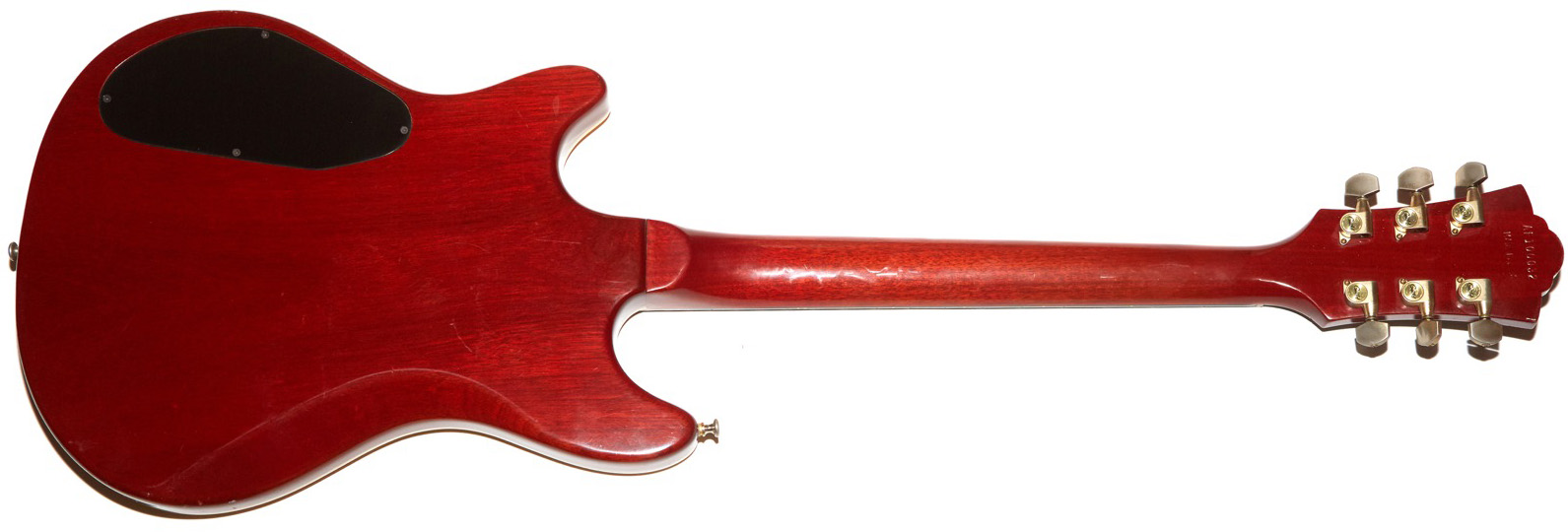
Hey bud!
I have an s-250 that’s been my main player for ten years. If you decide you can’t live with the guitar, is love to buy it off you. I’ve always wanted a 275. Great write-up by the way. Very thorough!
I’m looking for an s-250. I had one in 1987 and regret daily for getting tid of it. If you ever come across one for sale I’d appreciate a line.
I have a NOS S-275 ser# 004 if your interested?
hi do you still have that s-275? I am looking to buy one. Also what color is it? thanks
I am looking for an s-250….. had one in 1985 and regret ever selling it. If you’re interested in selling your s-275 or have a lead on a s-250 I’d appreciate it.
Sadly the S275 sold to someone who asked the same question a few months back. Good luck!
Thanks, if you get a line on another I’d appreciate an email elbert12@rocketmail.com